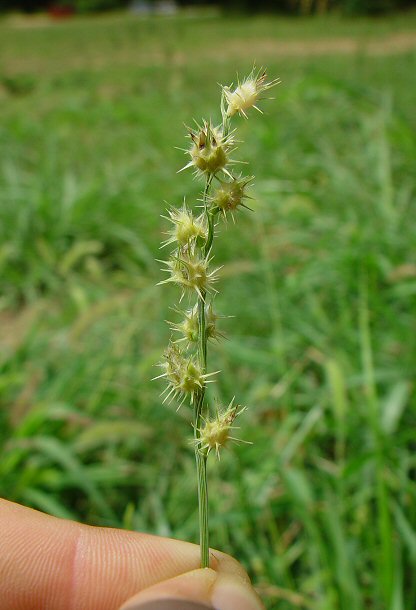Cenchrus longispinus (Hack.) Fernald
Sandbur

Native
CC = 0
CW = 5
MOC = 49
© DETenaglia
Cenchrus longispinus (Hack.) FernaldSandbur | |
 |
Native CC = 0 CW = 5 MOC = 49 |
© DETenaglia |
|
Family - Poaceae/Paniceae Stems - To 80cm tall, multiple from the base, spreading or ascending, somewhat compressed except at the nodes, glabrous, from fibrous roots.
Leaves - Blades to +/-15cm long, to 7mm broad, glabrous, flattened, scabrous. Sheaths glabrous, keeled. Ligule a ring of hairs to -2mm long.
Inflorescence - To 10cm long, with 4-18 spikelets. Flowers - Spikelets globose at maturity, -8mm in diameter, subtended by and partially covered with bristles and flattened spines to 7mm long. Lower glume to 4mm long. Upper glume to 6mm long, 3-5-nerved. Fertile lemma to -8mm long.
Flowering - May - October. Habitat - Sandy open areas, disturbed sites, roadsides, railroads. Origin - Native to U.S. and Central America. Other info. - This species can be found scattered throughout Missouri. It is a weed of disturbed areas with open sandy ground. The spiny burs of this species become detached from the inflorescence and stick to anything they touch. They cause intense and persistent pain. Photographs taken in Van Buren, MO., 7-18-03. |